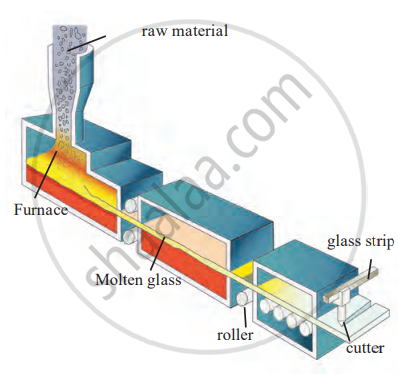Topics
Living World and Classification of Microbes
Health and Diseases
Force and Pressure
- Force
- Types of Force: Contact Force
- Types of Force: Non-Contact Force
- Balanced and Unbalanced Forces
- Inertia and Mass
- Types of Inertia
- Thrust and Pressure
- Pressure on Solids
- Pressure of liquid
- Gas Pressure
- Atmospheric Pressure
- Buoyancy Force (Upthrust Force)
- Archimedes Principle
- Density of substance and Relative density
Current Electricity and Magnetism
Inside the Atom
Composition of Matter
- Matter (Substance)
- Characteristics of Particles (Molecules) of Matter
- States of Matter
- The Solid State
- The Liquid State
- The Gaseous State
- Elements
- Types of Element: Metals
- Types of Element: Non-metal
- Type of Element: Metalloid
- Compound
- Types of Compound
- Mixture
- Types of Mixtures
- Solution
- Suspension Solution
- Colloidal Solution
- Molecular Formula of Compounds
- Valency
Metals and Nonmetals
- Types of Element: Metals
- Physical Properties of Metals
- Chemical Properties of Metal
- Types of Element: Non-metal
- Physical Properties of Non-metal
- Types of Element: Non-metal
- Chemical Properties of Non-metal
- Type of Element: Metalloid
- Uses of metals and nonmetals
- Nobel Metal
- Purity of Gold
- Corrosion of Metals
- Alloy
Pollution
- Pollution and Its Types
- Air Pollution and Its Causes
- Effects of Air Pollution
- Prevention of Air Pollution
- Water Pollution and Its Causes
- Effects of Water Pollution
- Prevention of Water Pollution
- Soil Pollution and its Causes
- Effects of Soil Pollution
- Prevention of Soil Pollution
- Relationship of Soil Pollution with Air and Water Pollution
- Laws for Control, Regulation, and Prevention of Pollution by Indian Government
Disaster Management
Cell and Cell Organelles
- Cell: Structural and Functional Unit of Life
- Prokaryotic and Eukaryotic Cell
- Plant Cell and Animal Cell
- Structure of the Cell
- Cell Wall - “Supporter and Protector”
- Plasma Membrane
- Cytoplasm - “Area of Movement”
- Nucleus - “Brain” of the Cell
- Endoplasmic Reticulum (ER)
- Golgi Apparatus - "The delivery system of the cell"
- Lysosome - “Suicidal Bag”
- Mitochondria - “Power House of the Cell”
- Plastids
- Non-living Substances Or Cell Inclusion
Human Body and Organ System
- Human Body
- Human Organ System
- Mechanism of respiration-Breathing
- Human Respiratory System
- Blood Circulatory System in Human
- Human Heart
- Blood Vessels
- Circulation of Blood in the Heart (Functioning of Heart)
- Heart Beat - Heart Sounds "LUBB" and "DUP"
- Blood
- Composition of Blood: Plasma (The Liquid Portion of Blood)
- Composition of Blood: Red Blood Cells (Erythrocytes)
- Composition of Blood: White Blood Cells (Leukocytes)
- Composition of Blood: Blood Platelets (Thrombocytes)
- Functions of Blood
- Blood Transfusion and Blood Groups (ABO and Rh system)
- Blood Pressure (B.P.)
- Heart Related Conditions
Introduction to Acid and Base
Chemical Change and Chemical Bond
Measurement and Effects of Heat
Sound
Reflection of Light
Man Made Materials
Ecosystems
Life Cycle of Stars
- Introduction of Glass
- Production of Glass
- Properties of Glass
Introduction of Glass:
Glass is a non-crystalline, hard but brittle material widely used in daily life. It is formed from a mixture of silica (SiO₂), commonly found in sand, and silicates.
History of Glass,
Glass was discovered accidentally by Phoenician traders cooking in the desert. They noticed a transparent material formed when heat combined sand and limestone, leading to the discovery of glass-making. This observation paved the way for the glass production process.
Production of Glass:
1. Ingredients
- Mixture of sand (SiO₂), soda, lime, and magnesium oxide.
- Discarded glass pieces are added to reduce the melting temperature.
2. Process
- Heating: Sand melts at 1700ºC. Adding soda and lime lowers the melting point to 850ºC.
- Melting: The mixture is heated to 1500ºC until all ingredients are liquified.
- Cooling: The molten mixture is rapidly cooled, forming a homogeneous, amorphous, and transparent material called soda-lime glass.

Glass manufacturing process
Properties of Glass:
- Glass becomes soft when heated and can be moulded into any shape.
- The density of glass varies depending on its ingredients.
- Glass is a poor conductor of heat, and rapid temperature changes can cause it to crack or break.
- It is a bad conductor of electricity, making it ideal for electrical insulation.
- Glass allows most light to pass through, providing transparency.
- Oxides like chromium, vanadium, or iron in glass absorb light, reducing transparency.
- Glass is chemically inert, resisting reactions with most substances.
- It is durable and resistant to weathering over time.
- Glass is recyclable without losing its properties.
- It can be tinted or treated to modify its optical and thermal properties.
If you would like to contribute notes or other learning material, please submit them using the button below.
